Rob Bignell's Blog, page 315
November 25, 2014
Writing Prompt: Go people watching
Suffering 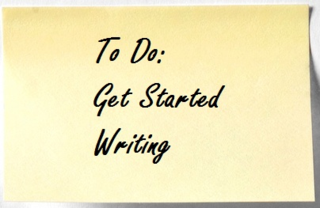 from writer’s block or need to add some spunk to your writing? The problem may be that you need to change up your routine. To that end, try this tip: Go people watching for an hour at a coffee shop or a side-walk café. Write notes describing how people converse, how they stand in line, how they order their coffees.
from writer’s block or need to add some spunk to your writing? The problem may be that you need to change up your routine. To that end, try this tip: Go people watching for an hour at a coffee shop or a side-walk café. Write notes describing how people converse, how they stand in line, how they order their coffees.
Need an editor? Having your book, business document or academic paper proofread or edited before submitting it can prove invaluable. In an economic climate where you face heavy competition, your writing needs a second eye to give you the edge. Whether you come from a big city like Washington, D.C., or a small town like Truth or Consequences, New Mexico, I can provide that second eye.
<A HREF="http://ws-na.amazon-adsystem.com/widg... Widgets</A>Related articles
 How many words is a novella?
How many words is a novella? Five Great Humorous Thoughts on Writing
Five Great Humorous Thoughts on Writing What are examples of 'concrete details'?
What are examples of 'concrete details'? Correct method for making 'process' plural
Correct method for making 'process' plural Media kit useful for promoting your book
Media kit useful for promoting your book
November 24, 2014
Editor unveiling ‘Writing Affirmations’
I’ll unveil  my latest book, Writing Affirmations: A Collection of Positive Messages to Inspire Writers at my hometown bookstore in Menomonie, Wis., on Saturday, Nov. 29.
my latest book, Writing Affirmations: A Collection of Positive Messages to Inspire Writers at my hometown bookstore in Menomonie, Wis., on Saturday, Nov. 29.
Writing Affirmations offers uplifting, meaningful phrases that can be read outloud or internalized weekly over the course of a year to inspire writers. Prompts and tips follow each affirmation, giving writers the encouragement and motivation to keep writing. The advice is based on my long-time experience as a creative writing teacher, editor, and bestselling author of more than a dozen books.
The event runs from 2 to 4 p.m at Bookends on Main, 214 East Main St., in historic downtown Menomonie, and is part of Small Business Saturday in which independent bookstores promote local authors. Writing Affirmations as well as my other titles will be available for sale at Bookends on Main during the event.
Need an editor? Having your book, business document or academic paper proofread or edited before submitting it can prove invaluable. In an economic climate where you face heavy competition, your writing needs a second eye to give you the edge. Whether you come from a big city like Grand Rapids, Michigan, or a small town like Frying Pan Landing, North Carolina, I can provide that second eye.
<A HREF="http://ws-na.amazon-adsystem.com/widg... Widgets</A>Related articles
 Why you can't get your outline into words
Why you can't get your outline into words Five Great Quotations about Outlining
Five Great Quotations about Outlining Prologue, epilogue offer info, action to boost tale
Prologue, epilogue offer info, action to boost tale Do I need to buy a barcode when self-publishing?
Do I need to buy a barcode when self-publishing? Sell your book by asking people about themselves
Sell your book by asking people about themselves
November 23, 2014
Five Great Quotations about Book Critics
“Thousands  of people don’t like what I do. Fortunately, millions do.” – James Patterson (responding to a critic who called his writing "subliterate")
of people don’t like what I do. Fortunately, millions do.” – James Patterson (responding to a critic who called his writing "subliterate")
“Children read books, not reviews. They don’t give a hoot about critics.” – Isaac Bashevis Singer
“I went for years not finishing anything. Because, of course, when you finish something you can be judged...I had poems which were re-written so many times I suspect it was just a way of avoiding sending them out.” – Erica Jong
“No fathers or mothers think their own children ugly; and this self-deceit is yet stronger with respect to the offspring of the mind.” – Miguel de Cervantes Saavedra
“Remarks are not literature.” – Gertrude Stein
Need an editor? Having your book, business document or academic paper proofread or edited before submitting it can prove invaluable. In an economic climate where you face heavy competition, your writing needs a second eye to give you the edge. I can provide that second eye.
Amazon.com Widgets
November 22, 2014
The beginning of every writing session is like setting down a road unknown
Any time 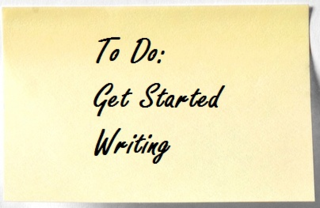 we begin something new – speaking in front of people we’ve never met, trying out a new electronic device, driving around a city we’re visiting for the first time – there’s a good chance that we’ll feel a little nervous. Our stomach might tighten, our hands could get clammy, we may even break a sweat. When that physical response occurs, our instincts tell us to avoid the danger.
we begin something new – speaking in front of people we’ve never met, trying out a new electronic device, driving around a city we’re visiting for the first time – there’s a good chance that we’ll feel a little nervous. Our stomach might tighten, our hands could get clammy, we may even break a sweat. When that physical response occurs, our instincts tell us to avoid the danger.
As a writer, you’ve probably experienced such sensations when pulling the chair up to the keyboard or opening your notebook. Queasiness takes over because you’re uncertain what to write or if what you plan to say will be good enough. There’s a distinct danger of failing.
Indeed, for writers each new book, chapter, paragraph and even sentence is akin to setting down a road unknown. Each time we begin to write mimics turning onto tan unknown road heading into the desert. What if we run out of gas out there? What if we get lost? Who knows what other threats await in that vast emptiness?
There’s no reward without risk, though. After all, who knows what great scenery lays ahead, what discoveries may be made, what Eden awaits at the western end of that highway? We never will know – we never will finish the sentence, paragraph, chapter or book – if we do not drive onward.
Even if upon reaching our destination nothing lays ahead but more desert, the journey itself was worth it. With that trek and each one that follows, the next road becomes easier to navigate. The experience alone enriches us.
Yes, we can decide to never set down that highway and instead pull off onto the shoulder. Our queasiness and self-doubts then may subside. But what have you given up?
Only your dream.
Need an editor? Having your book, business document or academic paper proofread or edited before submitting it can prove invaluable. In an economic climate where you face heavy competition, your writing needs a second eye to give you the edge. Whether you come from an urban area like Akron-Canton, Ohio, or a rural community like Toadlena, New Mexico, I can provide that second eye.
<A HREF="http://ws-na.amazon-adsystem.com/widg... Widgets</A>Related articles
 Avoid card tricks in the dark when writing
Avoid card tricks in the dark when writing Always review proof your book before okaying it
Always review proof your book before okaying it When should you start a new novel chapter?
When should you start a new novel chapter? Write winning query letter to editors, agents
Write winning query letter to editors, agents Project bible useful for keeping story ideas
Project bible useful for keeping story ideas
November 21, 2014
Think about concerns over marketing book
Many writers  don’t enjoy romoting, or “marketing” their books. Besides being antithetical to the artistry of writing, promotion is time consuming, reducing the number of hours available to write.
don’t enjoy romoting, or “marketing” their books. Besides being antithetical to the artistry of writing, promotion is time consuming, reducing the number of hours available to write.
Of course, for self-published writers, marketing is essential to ensure their book sells. Without some promotion, their title likley is to be lost among the more than 900 books published every day (in just the United States alone).
If you’re one of those writers who despise marketing, thinking a little about your feelings regarding this topic is important. Ask yourelf, how do you feel about marketing your book? Why do you hold this view? What are your concerns about spending time promoting your book?
You may find that such thoughts help you reconcile your disaste for book promotion with the need to do it.
Related articles:
g Why you need to market your book
g Tips to ensure a successful book reading/signing
Need an editor? Having your book, business document or academic paper proofread or edited before submitting it can prove invaluable. In an economic climate where you face heavy competition, your writing needs a second eye to give you the edge. Whether you come from a big city like Philadelphia, Pennsylvania, or a small town like Boring, Oregon, I can provide that second eye.
<A HREF="http://ws-na.amazon-adsystem.com/widg... Widgets</A>Related articles
 Media kit useful for promoting your book
Media kit useful for promoting your book What are 'book specs' on a press release?
What are 'book specs' on a press release? Lit term 'man vs. man' isn't gender specific
Lit term 'man vs. man' isn't gender specific Correct method for making 'process' plural
Correct method for making 'process' plural Editing client publishes second in crime series
Editing client publishes second in crime series
November 20, 2014
Add tagline to boost interest in your book
When designing 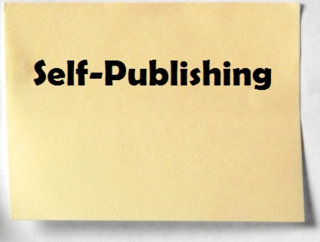 your book cover, you may want to consider adding a tagline.
your book cover, you may want to consider adding a tagline.
A tagline is phrase or short sentence that aims to entice readers into reading the book or at least looking more at it by reading the blurb or a few pages. The lettering typically is small and appears at the top of the cover.
Three major kinds of taglines are:
g Credentials – If you’re a bestselling author or if the book has made a bestsellers list raises the quality of the book in many readers’ minds. Such a tagline might read, The #1 New York times Bestselling Author.
g Endorsement – Should a reviewer, blogger or expert in a field have written nice things about your book, including those words also can boost readers’ interest. An example would be, “Ice-pick sharp..spectacularly sneaky...impressively cagey.” - Janet Maslin, New York Times.
g Shout line – This typically is a compelling line that points to the story’s central problem, major conflict, or theme. For instance, The strange death of World War II’s most audacious general.
Taglines always should be short, usually only a few words. Rarely should a tagline take up more than a single line of text on the cover; if it does, the cover often can appear cluttered, and so the tagline’s benefit is nullified.
Need an editor? Having your book, business document or academic paper proofread or edited before submitting it can prove invaluable. In an economic climate where you face heavy competition, your writing needs a second eye to give you the edge. Whether you come from a big city like Oakland, California, or a small town like Goobertown, Arkansas, I can provide that second eye.
Amazon.com Widgets
November 19, 2014
Hey Paul, explain this one to Peter: Borrow vs. lend vs. loan
If only 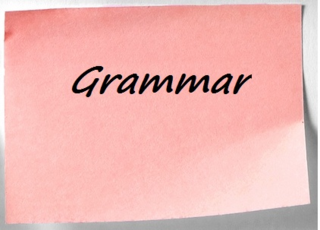 I could collect a dime each time these three words were mixed up!
I could collect a dime each time these three words were mixed up!
Borrow means to take something with the intention of returning it: Jane asked Jim if she could borrow his pen.
Lend means to grant permission to someone for taking something, with the understanding that it will be returned: Jim told Jane he would lend her his pen.
Loan means to turn over something to someone for their temporary use, usually with the expectation that interest will be paid: The bank would not loan money to Jim so he could start an ink pen company.
Need an editor? Having your book, business document or academic paper proofread or edited before submitting it can prove invaluable. In an economic climate where you face heavy competition, your writing needs a second eye to give you the edge. Whether you come from a big city like Manchester, New Hampshire, or a small town like Hell, Michigan, I can provide that second eye.
<A HREF="http://ws-na.amazon-adsystem.com/widg... Widgets</A>Related articles
 Five Great Humorous Thoughts on Writing
Five Great Humorous Thoughts on Writing What are examples of 'concrete details'?
What are examples of 'concrete details'? No more grappling: Clenched vs. clinched
No more grappling: Clenched vs. clinched Do I need to buy a barcode when self-publishing?
Do I need to buy a barcode when self-publishing? Sell your book by asking people about themselves
Sell your book by asking people about themselves
November 18, 2014
‘Writing Affirmations’ book hits shelves
My latest 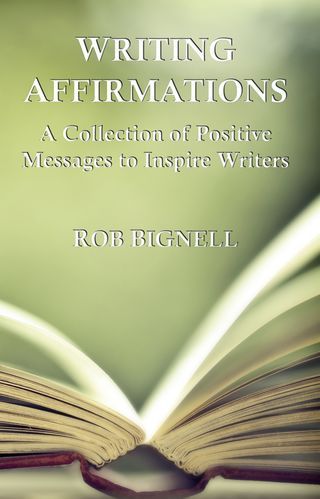 book, Writing Affirmations: A Collection of Positive Messages to Inspire Writers, is now available for sale in paperback and on Kindle.
book, Writing Affirmations: A Collection of Positive Messages to Inspire Writers, is now available for sale in paperback and on Kindle.
“Writing Affirmations” offers uplifting, meaningful phrases that can be read outloud or internalized weekly over the course of a year to inspire writers. Prompts and tips follow each affirmation, giving writers the encouragement and motivation to keep writing.
The advice is based on my long-time experience as a creative writing teacher, editor, and bestselling author of more than a dozen books. It is available for sale online.
Need an editor? Having your book, business document or academic paper proofread or edited before submitting it can prove invaluable. In an economic climate where you face heavy competition, your writing needs a second eye to give you the edge. Whether you come from an urban area like California's Orange County or a rural area like Loving County, Texas, I can provide that second eye.
Amazon.com Widgets
November 17, 2014
Lit term ‘man vs. man’ isn’t gender specific
Q: What is 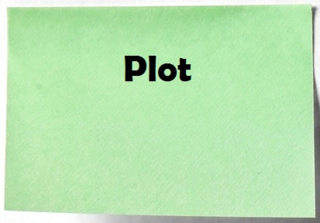 a “man vs. man” conflict? Is there such as thing as a “woman vs. woman” or “man vs. woman” conflict?
a “man vs. man” conflict? Is there such as thing as a “woman vs. woman” or “man vs. woman” conflict?
A man vs. man conflict occurs when two characters, regardless of their gender, struggle against one another to achieve their objectives. For example, Luke Skywalker and Darth Vader vie with one another over the type of government – an evil empire or a freedom-loving republic – that should rule their galaxy. Princess Leia is involved in the same man vs. man conflict with Darth Vader.
Related articles:
g Conflict: The heart of every story
g Incorporate man vs. man conflict into your story
Need an editor? Having your book, business document or academic paper proofread or edited before submitting it can prove invaluable. In an economic climate where you face heavy competition, your writing needs a second eye to give you the edge. Whether you come from a big city like San Francisco, California, or a small town like Nimrod, Oregon, I can provide that second eye.
Amazon.com Widgets
November 16, 2014
Five Great Quotations about Drafting
“You write 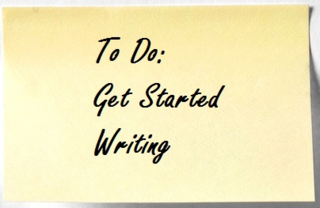 that first draft really to see how it’s going to come out.” – James A. Michener
that first draft really to see how it’s going to come out.” – James A. Michener
“The first draft of anything is shit.” – Ernest Hemingway
“Only ambitious nonentities and hearty mediocrities exhibit their rough drafts. It’s like passing around samples of sputum.” – Vladimir Nabokov
“Writers get embarrassed sometimes in talking about how much fun writing can be, but drafting is often really enjoyable. Often, you’re tumbling in the dark, and you don’t know where the story is going to lead.” – Karen Russell
“After finishing a draft, no matter how rough, I almost always put it aside for a while. It doesn’t matter if it’s a story or a novel, I find that when it’s still fresh in my mind I’m either thoroughly sick of its flaws or completely blind to them. Either way, I’m unable to make substantive edits of any value.” – Leslie Jamison
Need an editor? Having your book, business document or academic paper proofread or edited before submitting it can prove invaluable. In an economic climate where you face heavy competition, your writing needs a second eye to give you the edge. Whether you come from a big city like Oklahoma City, or a small town like Peculiar, Missouri, I can provide that second eye.
<A HREF="http://ws-na.amazon-adsystem.com/widg... Widgets</A>Related articles
 Why you can't get your outline into words
Why you can't get your outline into words



